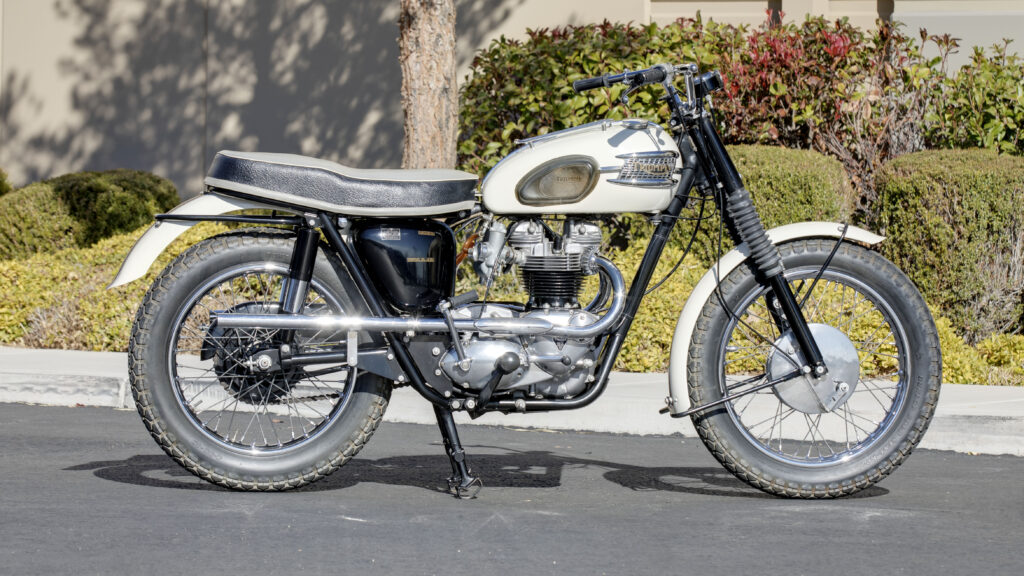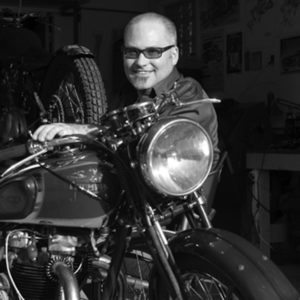“With Las Vegas capacity restrictions still in place toward the end of 2020, we had to make the decision to change the dates from our historical January date to late April,” explains Sam Murtaugh, Chief Operating Officer of Mecum Auctions. “While everyone looks forward to the annual motorcycle pilgrimage to Vegas in January, I believe our customers were pleased with the decision as it provided more time to allow the pandemic to calm down to safer levels. As soon as we changed dates, the consignment roster grew exponentially, and we are now looking forward to having a fabulous auction at the convention center starting on April 28 with over 1500 motorcycles to choose from.”
Mecum’s Las Vegas motorcycle auction is the largest in the world, and there is literally a bike for everyone who rides in their 2021 auction list. Will there be records set? With amazing bikes like a 1950 Vincent Black Shadow, a 1939 Crocker with patina, and a collection of every year H-D Knucklehead made, keep an eye on our Top 100 Most Expensive Motorcycles list!
Here are 10 machines on my personal ‘ones to watch’ list from Mecum’s bolstered sale roster:
1. 1939 Crocker Big Tank (ex-Bob Ross, Motorcycles Only LA)
























Finally … an eclectic top ten selection rather than the usual same old same old . With a little classic ( ahhh the Vincent ) thrown in for good measure .
And that Crocker … what a cracker of a bike that is … was .. and still is to this day IMNEHO ( in my never ever humble opinion )
Question ; Where the (bleep ) does one find a goram Crocker T-shirt ?
FYI; All this morning … the dreaded [ ERROR 403 Forbidden Access ] code … Hmmm .. was beginning to wonder …. hmmm
Ahhh the joys ,trials and tribulations of the digital domain … intentionally designed IMNEHO to infinitely frustrate and aggravate … grrr ….
😎
Indeed, I learn more than I ever wanted about shared servers for our site…one of our share partners, not that we ever met, was hacked, and the whole pile went down. Had to reboot our whole site! If you do notice such a thing in future, please send a note, as there are hours when we’re doing other things and won’t see it…
Ah, the Crocker T-shirt. Our local hole-in-the-wall Brit-bike shop had a rack of shirts, mostly with BSA, Triumph and Norton logos — and just one Crocker shirt. That was 30 years ago, and I’ve never seen another….it certainly sparked a conversation!
Why do those two “Crocker” engines 39-61-54 and 40-61-113, have stroker plates under the cylinders ?
Crocker adverts never gave engine capacity as an option. there’s a 1939 advert on the net.
good luck to bidders
That lovely CL350 caught my eye, so ready it is to be deliciously worn down by a life of riding… By some rich folk. And then, hopefully dug up a few centuries later, still ticking as my imagination runs wild. Thank you for that tiny, precious piece of paradise! Cheers!
Is 39-61-54 listed in the 1970s Crocker Register ? = Nope
That should be seen as strange for a supposed vehicle register.
In the 1970s Register he had 6 , 17, 300
In 2010 Register he was listed as previous owner of 6, 10, 17, 28, 54, 300, 302H , who was the previous owner of any of Bob Ross bikes ?
The Scribe of the Crocker Register should actually know. Theoretically Bob bought them from someone
I have learned a lot from you. keep sharing such good content